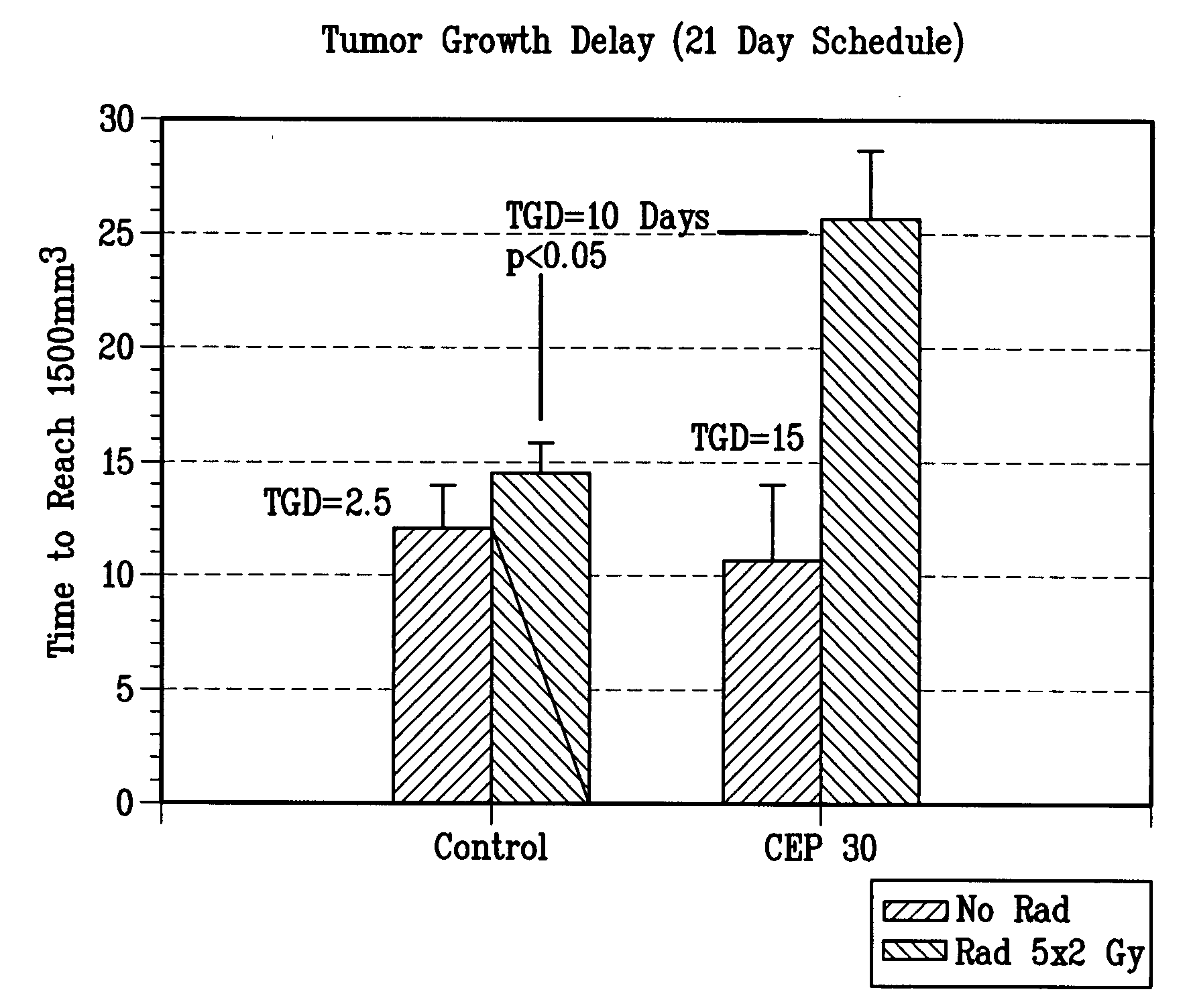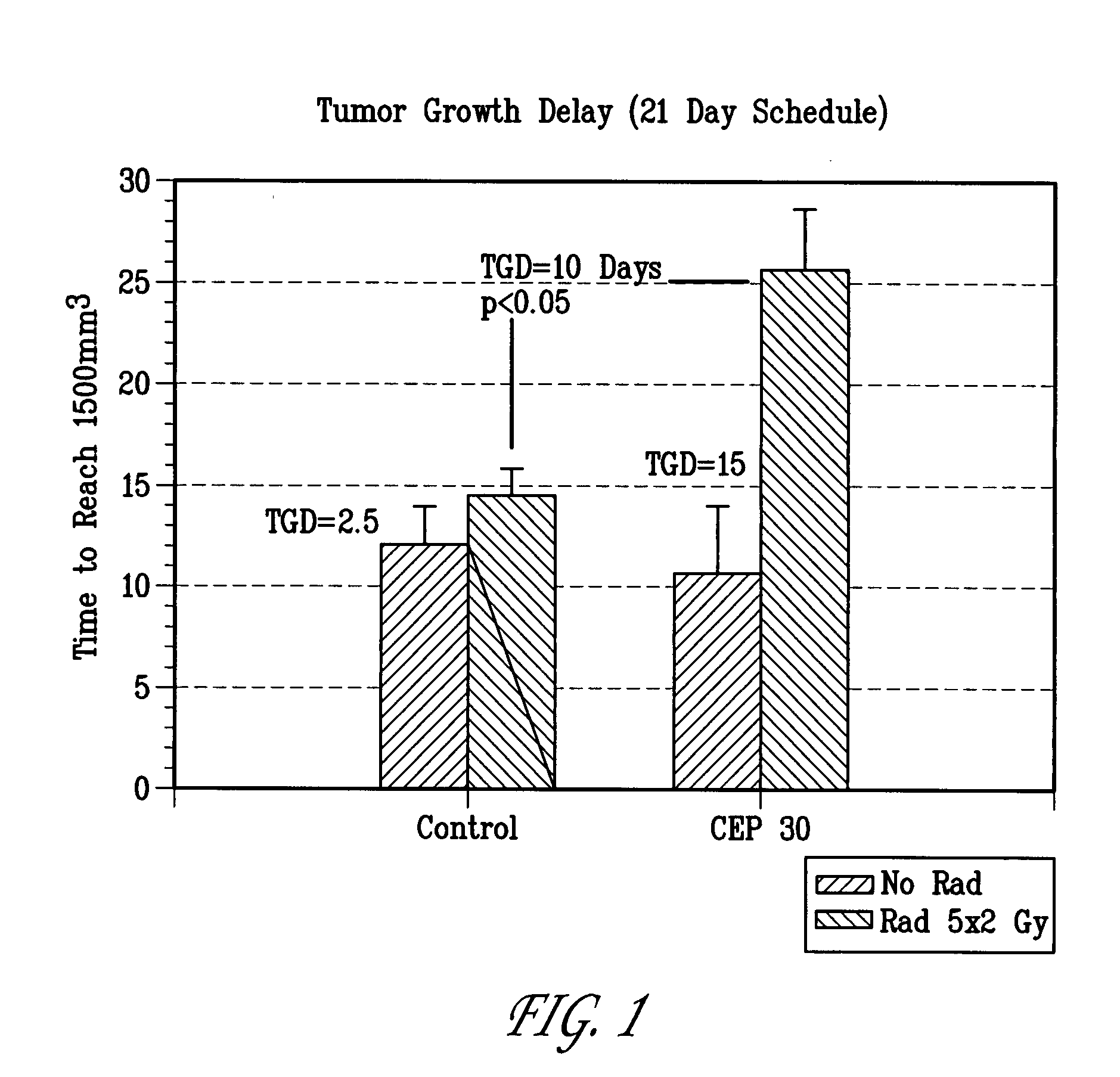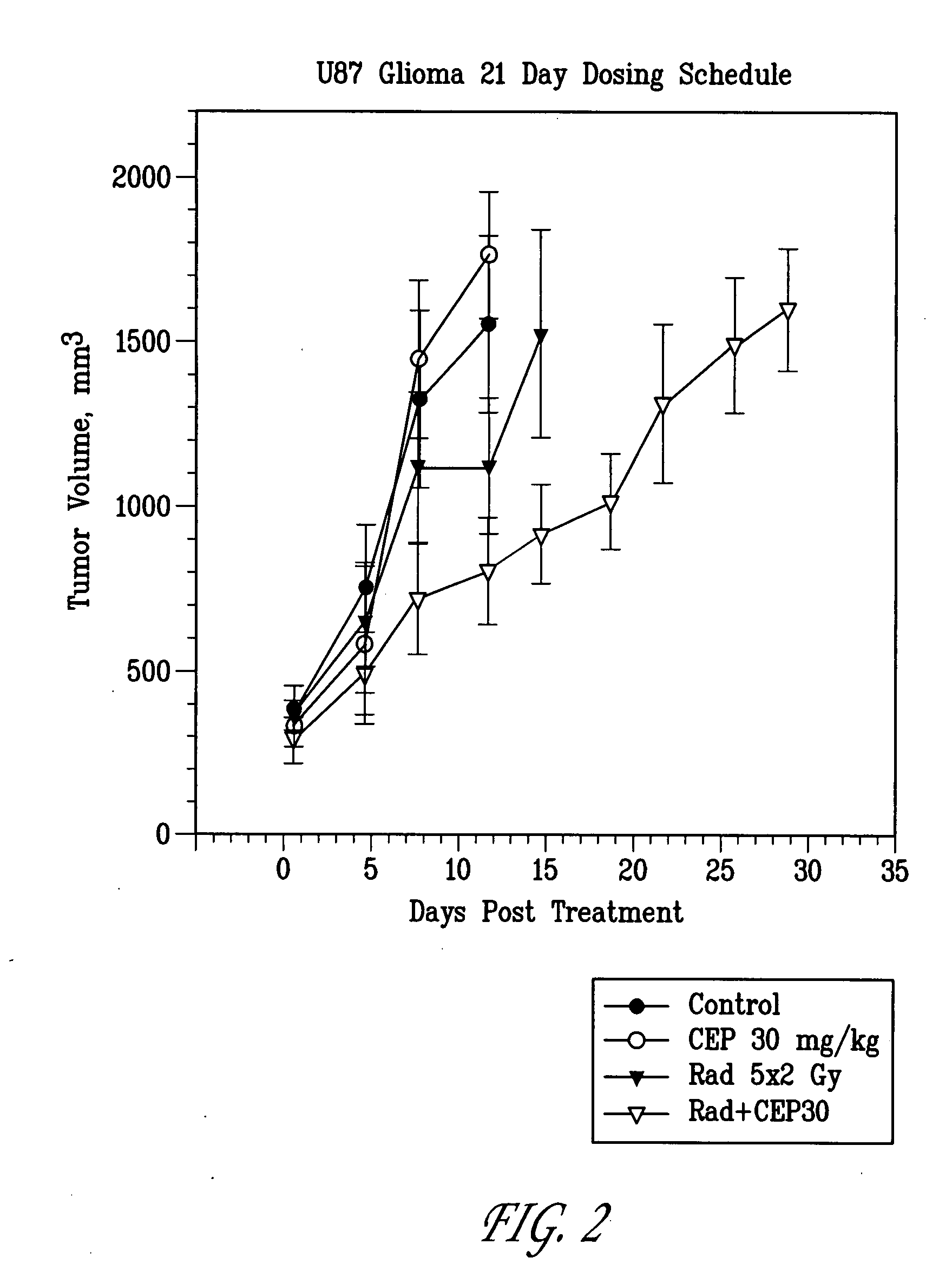Method of radio-sensitizing tumors using a radio-sensitizing agent
a radio-sensitizing agent and tumor technology, applied in the field of cancer treatment, can solve the problems of cancer mortality, treatment failure, and the inability to apply parp inhibitors therapeutically as chemo- and radio-sensitizers, and the limitations of the potency, selectivity, and deliverability of these compounds, and achieve the effect of improving the safety and efficacy of treatment and prevention
- Summary
- Abstract
- Description
- Claims
- Application Information
AI Technical Summary
Benefits of technology
Problems solved by technology
Method used
Image
Examples
example 1
Cell Line
[0101]U87MG human glioblastoma cells were cultured in commercially available Minimum Essential Medium (MEM) with 1.5 g / L sodium bicarbonate, 0.1 nM non-essential amino acids, 1.0 nM sodium pyruvate with 10% Fetal Bovine Serum (FBS).
example 2
Tumor Cell Implantation and Growth
[0102]Exponentially growing cells were harvested and injected ((2×106) cells / mouse) into the right flank of commercially available athymic NCR NUM nude mice. Animals bearing tumors of 200-400 mm3 were randomized according to size into the appropriate treatment groups (n=10). Tumors were measured every 3-4 days using a vernier caliper. Tumor volumes were calculated using the following formula:
V(mm3)=0.5236×length(mm)×width(mm)[length(mm)+width(mm) / 2].
example 3
[0103]Methods: U87MG human glioblastoma cells were injected subcutaneously (s.c.) into the right hind limb of athymic NCR NUM mice and allowed to grow to a mean tumor volume of 200 mm3. Mice that received radiotherapy were anesthetized prior to irradiation with 100 mg / kg Ketamine+10 mg / kg xylezine or 37.5 mg / kg Ketamine+0.2 mg / kg acepromazine, s.c. to provide 25-30 min of sedation. Anesthetized mice were positioned in malleable lead shielding which conforms to the animal's body size and shape without undue pressure. The body was shielded by lead. The tumor bearing leg or exposed tumor was irradiated with the appropriate dose. After tumors were irradiated, the mice are returned to cages on heating pads until recovered from the anesthetics. Example 7 was given as soon possible (within 30 min) after radiation (RT). FIG. 3: Mice were randomized into the following treatment groups (n=10): 1) vehicle, 2) radiation only (7.5 Gy for 3 days), 3) Example 7 only (100 mg / kg dose equivalents of ...
PUM
| Property | Measurement | Unit |
|---|---|---|
| Efficiency | aaaaa | aaaaa |
| Pharmaceutically acceptable | aaaaa | aaaaa |
Abstract
Description
Claims
Application Information
 Login to View More
Login to View More - R&D
- Intellectual Property
- Life Sciences
- Materials
- Tech Scout
- Unparalleled Data Quality
- Higher Quality Content
- 60% Fewer Hallucinations
Browse by: Latest US Patents, China's latest patents, Technical Efficacy Thesaurus, Application Domain, Technology Topic, Popular Technical Reports.
© 2025 PatSnap. All rights reserved.Legal|Privacy policy|Modern Slavery Act Transparency Statement|Sitemap|About US| Contact US: help@patsnap.com



